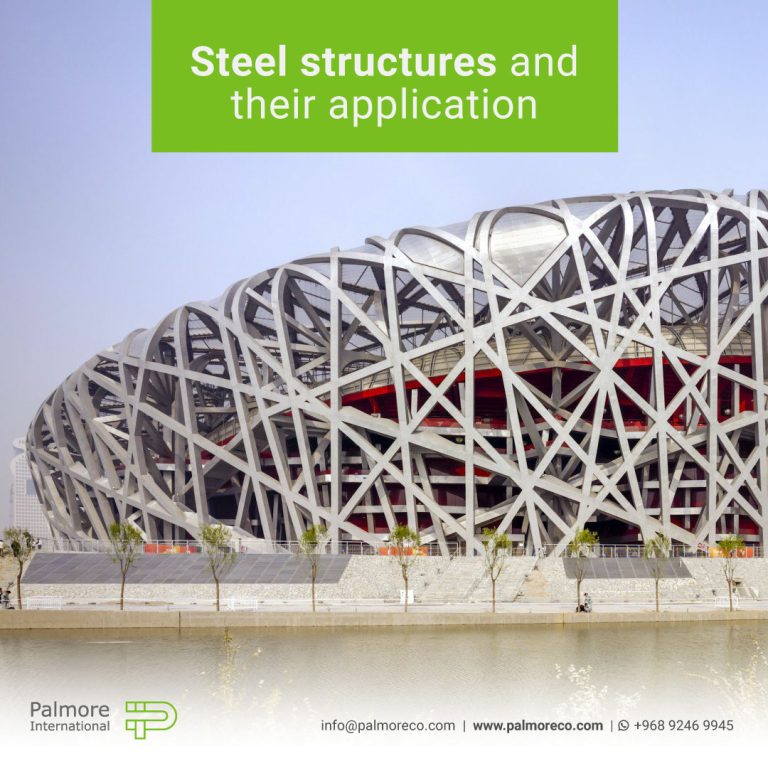
Steel structures and their application
Steel Structure as one of the most widely used materials in construction today, is a general title for all types of steel structures. Today, steel, which is an alloy made of iron and carbon, has become one of the most efficient building materials with its many capabilities. Steel structures have such a special place in the construction of the buildings that in some construction projects the structure cannot be replaced by any other material.
Frame steel structures, shell steel structures, suspended steel structures and truss steel structures are the main types of steel structures. In this article, you will learn in detail about the applications, advantages and types of metal structures. So join us to get acquainted with the unique role of metal structures.
Application of metal structures
Steel is one of the main metals in the manufacturing industry. Steel components have different applications depending on their capabilities when they are put together with a certain shape. In general, it can be said that various types of metal structures are used in the construction of various types of stairs, building structures, especially tall buildings, fluid storage tanks and other fixed structures.
Advantages of steel structures
The reason for the growing popularity of various types of metal structures is related to their characteristics and advantages over concrete and the like. Properties of steel such as strength and at the same time easy forming, hammering, weld acceptance, spring and elastic properties along with attractive features of each type of steel structures, is the key to a high tendency to this type of structures.
Features of all types of steel structures include high tensile and compressive strength, long life, greater resistance and easier replacement, lower seismic pressure transfer to the building during an earthquake, easy installation, prefabrication, elasticity and uniform quality of all types of steel structures.
Some other advantages of steel structures:
Steel structure is the most cost-effective in material and design for most projects. In comparison with other traditional building methods, it is inexpensive to manufacture and erect.
Most architects can’t wait to work with steel because it has a natural beauty they can’t resist. With steel, you can build long spans without columns, while allowing lots of natural light into your structure.
The construction of steel structures is carried out by skilled personnel at the construction site after they are built at factories. Steel structures are proven to be the best option for management in many industry surveys.
It can withstand extreme conditions or extreme forces, such as strong winds, earthquakes, hurricanes, heavy rains, and snowfall. Apart from being resistant to rust, they do not suffer from termites, bugs, mildew, mold and fungus, as are wood frames.
Types of shaped steels
Depending on the application of the steel piece, it can be shaped into different shapes. Steel parts come in a wide variety of shapes and scales, which are rolled by heat or cold, and others are made by welding flat or bent plates together. Common shapes of steel parts include HSS, channel model, angled and I-shaped beams.
Types of steel structures
There are various types of steel structures and from various types of metal structures can be used to frame structures that are created using beams and columns, network structures that include lattice and dome steel structures, pre-reinforced structures, truss structures Which is created using rebars and triangular components, arched structure, arched bridge, beam bridge, cable bridge, suspension bridge and truss bridge.
What is a frame steel structure?
One of the types of steel structures is frame-shaped structures. Steel frame is a construction technique that uses a steel frame. This skeleton consists of vertical steel columns and I-shaped horizontal beams made of rectangular grids. The work of these rectangular grids will be to support the floors, ceilings and walls, all of which are attached to the frame. In fact, it was the steel frame technique that allowed humans to build skyscrapers, because without this type of structure, it would be very difficult to build a building of this height.
Rolled steel profiles or cross sections of steel columns form the shape of the letter I. Two wide edges in a column are thicker and wider than the edges of a beam. The reason for this is the increase in compressive load tolerance in the structure. Square and tubular steel sections can also be used in frame steel structures. In this case, these sections are filled with concrete. Steel beams are attached to the columns using screws and bolts. Due to the increased resistance to momentary bending, the beam core in I-shaped beams is often wider than the column core.
Wide sheets of steel decks can also be used to cover the upper surface of a frame steel structure.
Applications of frame steel structures
This type of steel structure can be used for high-rise buildings such as multi-storey buildings and skyscrapers, industrial buildings, warehouses, residential buildings and temporary structures.
Reinforcement of frame steel structure against fire
Steel softens and deforms in the face of high temperatures, resulting in some shedding, so the steel frame needs to be reinforced. To strengthen the columns, they are covered with a fire-resistant structure. The beams are also covered with concrete or gypsum layer.
The difference between a steel building and a frame steel structure
You can have a building that is basically all made of steel. In this case, steel is used both as an internal support and as an external coating. But in the frame metal structure, other materials are used to build floors, walls and the like. Metal buildings are built for a variety of purposes, such as warehouses, workshops, and even homes.

